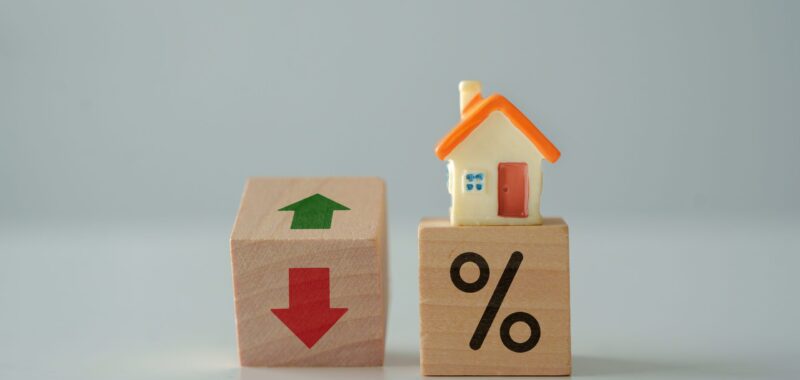According to ATTOM Data’s first quarter 2025 U.S. Home Equity & Underwater Report, while 46.2% of mortgaged residential properties in the country were considered equity-rich in the first quarter of the year—down from 47.7% in Q4 2024—47 states experienced a slight drop in the proportion of equity-rich properties (properties that have a loan balance not exceeding half the total property value) between Q4 2024 and Q1 2025.
Nationwide, the proportion of properties considered equity-rich has dropped slightly each quarter since peaking at 49.2% in Q2 2024—however, the rate is still historically high and nearly double what it was in Q1 2020.
The report notes that on a yearly basis, 33 states experienced a rise in the proportion of equity-rich properties. Additionally, of 110 metros that ATTOM Data measured, the proportion of equity-rich homes decreased quarter-over-quarter in 99 of them, or 90%. The year prior, out of the same amount of metros measured, just 56 experienced a decline in equity-rich properties, or 51%.
“Home equity rates are near their highest points in recent years, and the dip we’ve seen early this year in the proportion of equity-rich homes shouldn’t cause too much concern,” said ATTOM CEO Rob Barber. “In each of the two previous years, the first quarter marked the lowest point of the year before the proportion of equity-rich homes shot back up in the second quarter.”
The states with the largest year-over-year portion of homes considered equity rich were all located in the Northeast, with the exception of Kentucky, which moved from 28.7% of its properties considered equity-rich in Q1 2024 to 33.3% in Q1 2025. Connecticut (42.2% to 48% year-over-year) led the way for the Northeast, followed by New York (49.1% to 54.1%), New Jersey (47.1% to 52.1%) and Rhode Island (55% to 59.8%).
In terms of states that experienced the largest annual decrease in the percentage of properties that were measured to be equity-rich, locales were mainly composed of Western states, with Florida (which experienced the largest decrease from 54.4% to 49.3% of mortgages that were equity-rich) the geographical outlier. Utah had the biggest decline for the West (54% to 50.7%), followed by Arizona (52.9% to 49.8%); Washington state (54.2% to 51.3%) and Colorado (48.4% to 45.8%).
States with the highest proportion of equity-rich properties in Q1 2025 were also grouped in the Northeast and West, with six in the former and four in the latter. The top five were Vermont (85.8% of properties considered equity-rich), New Hampshire (60.5%), Rhode Island (59.8%), Montana (59.4%) and Maine (58.9%). Expressed in terms of the 110 metro areas that ATTOM measured (criteria of 500,000 people or more), San Jose, California, led the way for percentage of equity-rich properties at 68.2%, followed by Los Angeles, California (64%); San Diego, California (63%); Portland, Maine (61.5%); and Miami, Florida (59.5%).
States with the lowest proportion of equity-rich properties were scattered throughout the U.S., with Louisiana (20.3%) at the nadir, followed in ascending order by Maryland (31.4%), Illinois (31.5%), Alaska (31.7%) and North Dakota (31.9%).
According to ATTOM, out of 1,751 counties that had at least 2,500 homes with a mortgage during Q1 2025, 13 of the 15 most equity-rich counties hailed from Michigan, Wisconsin or Vermont. The individual counties with the highest rate of equity-rich properties were Chittenden County, Vermont (91.3%); Marquette County, Michigan (89.8%); Benzie County, Michigan (88.7%); Portage County, Wisconsin (88.6%); and Manistee County, Michigan (88%).
The counties with the lowest proportion of equity-rich properties were concentrated in the South, with an attention-grabbing nine of 15 in Louisiana. Those with the lowest number of equity-rich properties were Vernon County, Louisiana (6.3%); Iberville County, Louisiana (8.3%); Long County, Georgia (9.8%); Ascension County, Louisiana (9.9%); and Acadia County, Louisiana (10.9%).
On the other end of the equity spectrum, the nationwide proportion of mortgages that were considered seriously underwater—with a loan balance that exceeds the value of the property by at least 25%—has halved and then some since the year 2020 when it was 6.6%. Clocking at 2.8% for Q1 2025, the rate of underwater mortgages has fluctuated between 2% and 3% since early 2023.
The rate of underwater mortgages increased on a quarterly basis in 48 states plus the District of Columbia compared with a year-over-year rise that was measured in only 25 states.
By region, the South and Midwest had the highest proportion of homes that had mortgages considered seriously underwater, with a convincing 18 out of the 20 states containing homes with the highest rates of seriously underwater mortgages. Louisiana again led these types of properties, with 10.5% of homes there considered seriously underwater. This was followed by Kentucky (7.3%), Mississippi (6.6%), Arkansas (5.8%) and Iowa (5.7%). States with the lowest proportion of seriously underwater homes were Vermont (0.7%), Rhode Island (1%), New Hampshire (1.1%), Massachusetts (1.2%) and Hawaii (1.3%).
For the full report, click here.

